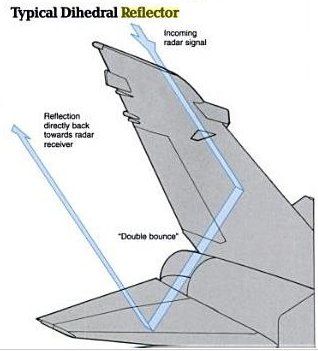I agree with need to induct a stealth platform and that it should be manufactured in-house.
However, I would stress the need to reduce JF-17's RCS as much as possible while keeping the expense within certain limits. Every little bit helps, and it does not matter what RCS is contributed by missiles attached to JF-17. Lowering RCS is important for its own sake and the argument about aircraft attachments contributing to RCS is not decisive in my opinion. How much does a single SD-10 contribute? What difference would be made by two BVR and two WVR missiles? Anything beyond that should be eliminated as much as possible. If JF-17's small size counts as a strength, then we might as well make it matter by lowering RCS as much as possible without going broke.
RCS control on an existing platform, especially when the platform never had any RCS control measures to start, is highly problematic, in terms of technical hurdles to overcome and if accomplished, tactical usage of the modified platform.
The above example is how any radar
PERCEIVE any target, from a human being to a building to an aircraft. Each voltage spike came from a structure, of which itself is most likely made up of many smaller structures. A jet engine is a clear example of this. All of these contribute to a total RCS value. So in essence, each structure, from the cockpit seat to the pilot himself to the wings to the UHF antenna and so on, is a contributor to final RCS value. This understanding is extremely important in the concept of RCS and its control methodologies and tactics of those methods on a complex body.
The three items are distinct:
- The radar cross section (RCS)
- RCS control methods
- Tactics on how to deploy and use the many methods
Tactics is where it is problematic on an existing platform. A change to lower the contribution -- contributorship -- of a structure may aerodynamically damage the platform beyond flight capability, at least on paper anyway.
But let us be generous and assume that most of the contributorships (voltage spikes) have been lowered to below the graph and effectively into the 'stealthy' region, and yet there are still a few that could not be lowered, such as the single vertical stabilator that together with the horizontal stabilators formed the dreaded corner reflector from the side perspective.
In RCS control tactics, the corner reflector is a huge no-no. From major reflector like the stabilators to smaller reflectors created by the four fins on bombs and missiles. In terms of reflectivity or radiation output, the corner is about 90% as that of the flat plate facing the radar. But what make the corner worse than the plate is that it has an effective electromagnetic aperture of 60 deg from any direction, in other words, with the plate, as you move from perpendicular, radiation
RECEIVED BY YOU drops dramatically while with the corner reflector, you would have to move beyond 60 deg view in order to experience the same dramatic decline.
So let us say that you reduced the JF-17's many contributors into the 'stealthy' region except for a few major ones without compromising aerodynamic stability. Now you start attaching weapons to your modified fighter.
A clean F-16, meaning no externals except for two Sideweiners...I mean...Sidewinders serves as the official unofficial standards for borderline 'stealth'. Except for the side perspective where its single vertical stab forms that dreaded corner reflector.
How much does those two missiles contribute?
What the missile do is make the aircraft
LESS AMBIGUOUS from background radiation to the seeking radar. Very important that you understand ambiguity because that is the foundation of data processing to extract a target out of background.
When our clean F-16 hovers around or descends below 1000 ft altitude, its ambiguity factor goes high and the aircraft effectively went 'stealthy' despite the fact that it was still in our radar view. Ambiguity is about certainty, or the lack thereof. Basically, the radar computer says: 'I see something but not sure what it is.' Ambiguity is about (un)certainty
WHILE THE TARGET IS INSIDE RADAR VIEW.
If we add on other externals like bombs, larger missiles, and sensor pods, our F-16's ambiguity factor will be lowered to match the doo-dads that we added on. So at the same altitude, the wings may be 'invisible' to the seeking radar, but the externals will stand out like how those voltage spikes are in the graph. They do not need to be huge like that major spike from the airliner's tail section contributorship. They just need to be enough to rise above the built-in ambiguity threshold for the radar computer to say: 'Gotcha...!!!'
So if you want to make any use of this modded JF-17 without compromising its new lowered RCS value, at least from the frontal aspect anyway, you will have to devise new air doctrines and tactics to use a platform that for the sake of 'stealth' is now severely limited in warfighting capability.
That is not new, actually. Look at the US F-117 and see how limited are its deployment.
Remember, we are being very generous here in assuming that many of the JF-17's existing contributors can be 'worked on', so to speak. We are also generous in assuming that Pakistan have measurement facilities, indoor and out, to perform the crucial steps of:
- Prediction
- Modeling
- Measurement
You cannot avoid this process. Even we did not when we created the new F-18.













